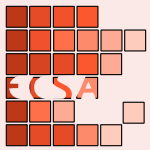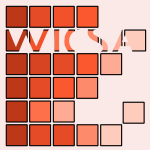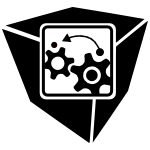Tag #smell
127 papers:
 ICSA-2019-TianLB #architecture #case study #developer #how #stack overflow
ICSA-2019-TianLB #architecture #case study #developer #how #stack overflow- How Developers Discuss Architecture Smells? An Exploratory Study on Stack Overflow (FT, PL0, MAB), pp. 91–100.
 ICPC-2019-FilhoMVMSMR #sql
ICPC-2019-FilhoMVMSMR #sql- Prevalence of bad smells in PL/SQL projects (FGdAF, ADFM, TdSV, JMM, ÍPdS, JdCM, LSR), pp. 116–121.
 ICPC-2019-PecorelliPNL #detection #heuristic #machine learning
ICPC-2019-PecorelliPNL #detection #heuristic #machine learning- Comparing heuristic and machine learning approaches for metric-based code smell detection (FP, FP, DDN, ADL), pp. 93–104.
 ICSME-2019-Imran #analysis #design #detection #java #open source
ICSME-2019-Imran #analysis #design #detection #java #open source- Design Smell Detection and Analysis for Open Source Java Software (AI), pp. 644–648.
 ICSME-2019-RahmanRW #python #security
ICSME-2019-RahmanRW #python #security- Share, But be Aware: Security Smells in Python Gists (MRR, AR, LW), pp. 536–540.
 ICSME-2019-SasAF #architecture #case study #evolution
ICSME-2019-SasAF #architecture #case study #evolution- Investigating Instability Architectural Smells Evolution: An Exploratory Case Study (DS, PA, FAF), pp. 557–567.
 MSR-2019-BleserNR #scala
MSR-2019-BleserNR #scala- Assessing diffusion and perception of test smells in scala projects (JDB, DDN, CDR), pp. 457–467.
 MSR-2019-HabchiMR #android #question
MSR-2019-HabchiMR #android #question- The rise of Android code smells: who is to blame? (SH, NM, RR), pp. 445–456.
 ESEC-FSE-2019-Khanve #empirical #game studies #web
ESEC-FSE-2019-Khanve #empirical #game studies #web- Are existing code smells relevant in web games? an empirical study (VK), pp. 1241–1243.
- ICSE-2019-LiC0S #detection #named
- Dlfinder: characterizing and detecting duplicate logging code smells (ZL, TH(C, JY0, WS), pp. 152–163.
- ICSE-2019-RahmanPW #framework #security
- The seven sins: security smells in infrastructure as code scripts (AR, CP, LW), pp. 164–175.
 ECSA-2018-MartiniFBR #architecture #case study #identification #scalability
ECSA-2018-MartiniFBR #architecture #case study #identification #scalability- Identifying and Prioritizing Architectural Debt Through Architectural Smells: A Case Study in a Large Software Company (AM, FAF, AB, RR), pp. 320–335.
 ICPC-2018-TakahashiSHS #case study #debugging #locality #using
ICPC-2018-TakahashiSHS #case study #debugging #locality #using- A preliminary study on using code smells to improve bug localization (AT, NSL, SH, MS), pp. 324–327.
 ICSME-2018-PalombaZL #automation #detection #information retrieval #using
ICSME-2018-PalombaZL #automation #detection #information retrieval #using- Automatic Test Smell Detection Using Information Retrieval Techniques (FP, AZ, ADL), pp. 311–322.
 ICSME-2018-SpadiniPZBB #on the #quality
ICSME-2018-SpadiniPZBB #on the #quality- On the Relation of Test Smells to Software Code Quality (DS, FP, AZ, MB, AB), pp. 1–12.
 SANER-2018-FakhouryANKA #detection #learning #question
SANER-2018-FakhouryANKA #detection #learning #question- Keep it simple: Is deep learning good for linguistic smell detection? (SF, VA, CN, FK, GA), pp. 602–611.
 SANER-2018-NucciPTSL #detection #machine learning #question #using
SANER-2018-NucciPTSL #detection #machine learning #question #using- Detecting code smells using machine learning techniques: Are we there yet? (DDN, FP, DAT, AS, ADL), pp. 612–621.
 SANER-2018-TsantalisCC #lessons learnt
SANER-2018-TsantalisCC #lessons learnt- Ten years of JDeodorant: Lessons learned from the hunt for smells (NT, TC, AC), pp. 4–14.
 SCAM-2018-DeckerNDCMK #question #research
SCAM-2018-DeckerNDCMK #question #research- [Research Paper] Which Method-Stereotype Changes are Indicators of Code Smells? (MJD, CDN, ND, MLC, JIM, NAK), pp. 82–91.
 SCAM-2018-PaceTG #architecture #predict #research #towards #using
SCAM-2018-PaceTG #architecture #predict #research #towards #using- [Research Paper] Towards Anticipation of Architectural Smells Using Link Prediction Techniques (JADP, AT, DG), pp. 62–71.
- ICSE-2018-PalombaBPFOL #empirical #maintenance #on the #scalability
- On the diffuseness and the impact on maintainability of code smells: a large scale empirical investigation (FP, GB, MDP, FF, RO, ADL), p. 482.
- ICSE-2018-PalombaPZOL #comparison
- The scent of a smell: an extensive comparison between textual and structural smells (FP, AP, AZ, RO, ADL), p. 740.
 ICPC-2017-HozanoGAFC #detection #developer #exclamation #performance
ICPC-2017-HozanoGAFC #detection #developer #exclamation #performance- Smells are sensitive to developers!: on the efficiency of (un)guided customized detection (MH, AG, NA, BF, EdBC), pp. 110–120.
 ICPC-2017-SousaSFFB #composition #detection #flexibility #named
ICPC-2017-SousaSFFB #composition #detection #flexibility #named- FindSmells: flexible composition of bad smell detection strategies (BLS, PPS, EF, KAMF, MASB), pp. 360–363.
 ICSME-2017-PalombaZ #question #refactoring #testing
ICSME-2017-PalombaZ #question #refactoring #testing- Does Refactoring of Test Smells Induce Fixing Flaky Tests? (FP, AZ), pp. 1–12.
 ICSME-2017-Sae-LimHS #case study #developer #how
ICSME-2017-Sae-LimHS #case study #developer #how- How Do Developers Select and Prioritize Code Smells? A Preliminary Study (NSL, SH, MS), pp. 484–488.
 SANER-2017-CaretteYHMR #android #energy
SANER-2017-CaretteYHMR #android #energy- Investigating the energy impact of Android smells (AC, MAAY, GH, NM, RR), pp. 115–126.
 SANER-2017-PalombaNPZL #detection #lightweight
SANER-2017-PalombaNPZL #detection #lightweight- Lightweight detection of Android-specific code smells: The aDoctor project (FP, DDN, AP, AZ, ADL), pp. 487–491.
 SANER-2017-SabouryMKA #empirical #javascript
SANER-2017-SabouryMKA #empirical #javascript- An empirical study of code smells in JavaScript projects (AS, PM, FK, GA), pp. 294–305.
 SANER-2017-Steinbeck #approach #visualisation
SANER-2017-Steinbeck #approach #visualisation- An arc-based approach for visualization of code smells (MS), pp. 397–401.
 SCAM-2017-GhafariGN #android #security
SCAM-2017-GhafariGN #android #security- Security Smells in Android (MG, PG, ON), pp. 121–130.
 SCAM-2017-NagyC #detection #embedded #java #query #sql
SCAM-2017-NagyC #detection #embedded #java #query #sql- A Static Code Smell Detector for SQL Queries Embedded in Java Code (CN0, AC), pp. 147–152.
 ESEC-FSE-2017-CedrimGMGSMFRC #comprehension #refactoring
ESEC-FSE-2017-CedrimGMGSMFRC #comprehension #refactoring- Understanding the impact of refactoring on smells: a longitudinal study of 23 software projects (DC, AG, MM, RG, LdSS, RMdM, BF, MR, AC), pp. 465–475.
 SLE-2017-StijlaartZ #taxonomy #towards
SLE-2017-StijlaartZ #taxonomy #towards- Towards a Taxonomy of Grammar Smells (MS, VZ), pp. 43–54.
 ICPC-2016-HermansA #empirical #programming #source code
ICPC-2016-HermansA #empirical #programming #source code- Do code smells hamper novice programming? A controlled experiment on Scratch programs (FH, EA), pp. 1–10.
 ICPC-2016-PalombaPLOZ #detection
ICPC-2016-PalombaPLOZ #detection- A textual-based technique for Smell Detection (FP, AP, ADL, RO, AZ), pp. 1–10.
 ICPC-2016-Sae-LimHS
ICPC-2016-Sae-LimHS - Context-based code smells prioritization for prefactoring (NSL, SH, MS), pp. 1–10.
 ICPC-2016-YoshidaSC0I #refactoring
ICPC-2016-YoshidaSC0I #refactoring- Revisiting the relationship between code smells and refactoring (NY, TS, EC, AO0, KI), pp. 1–4.
 ICSME-2016-AnicheBTDG #architecture #mvc #set
ICSME-2016-AnicheBTDG #architecture #mvc #set- A Validated Set of Smells in Model-View-Controller Architectures (MFA, GB, CT, AvD, MAG), pp. 233–243.
 ICSME-2016-FontanaPRZ #architecture #automation #detection
ICSME-2016-FontanaPRZ #architecture #automation #detection- Automatic Detection of Instability Architectural Smells (FAF, IP, RR, MZ), pp. 433–437.
 ICSME-2016-Palomba #detection
ICSME-2016-Palomba #detection- Alternative Sources of Information for Code Smell Detection: Postcards from Far Away (FP), pp. 636–640.
 ICSME-2016-PalombaZFLO #debugging #performance #predict #using
ICSME-2016-PalombaZFLO #debugging #performance #predict #using- Smells Like Teen Spirit: Improving Bug Prediction Performance Using the Intensity of Code Smells (FP, MZ, FAF, ADL, RO), pp. 244–255.
 MSR-2016-SharmaFS #question
MSR-2016-SharmaFS #question- Does your configuration code smell? (TS, MF, DS), pp. 189–200.
 SANER-2016-FontanaDWYZ #classification #concept
SANER-2016-FontanaDWYZ #classification #concept- Antipattern and Code Smell False Positives: Preliminary Conceptualization and Classification (FAF, JD0, BW, AY, MZ), pp. 609–613.
 SANER-2016-SohYKG #maintenance #process #programming #question
SANER-2016-SohYKG #maintenance #process #programming #question- Do Code Smells Impact the Effort of Different Maintenance Programming Activities? (ZS, AY, FK, YGG), pp. 393–402.
 ASE-2016-TufanoPBPOLP #empirical
ASE-2016-TufanoPBPOLP #empirical- An empirical investigation into the nature of test smells (MT, FP, GB, MDP, RO, ADL, DP), pp. 4–15.
 FSE-2016-DouCGXXW #detection #spreadsheet
FSE-2016-DouCGXXW #detection #spreadsheet- Detecting table clones and smells in spreadsheets (WD, SCC, CG, CX0, LX, JW0), pp. 787–798.
- ICSE-2016-CheungCLX #automation #clustering #detection #named #spreadsheet #using
- CUSTODES: automatic spreadsheet cell clustering and smell detection using strong and weak features (SCC, WC, YL, CX0), pp. 464–475.
 WICSA-2015-MoCKX #architecture #automation #detection
WICSA-2015-MoCKX #architecture #automation #detection- Hotspot Patterns: The Formal Definition and Automatic Detection of Architecture Smells (RM, YC, RK, LX), pp. 51–60.
 ICSME-2015-Aniche #detection #development #web
ICSME-2015-Aniche #detection #development #web- Detection strategies of smells in web software development (MFA), pp. 598–601.
 ICSME-2015-Fenske #configuration management
ICSME-2015-Fenske #configuration management- Code smells in highly configurable software (WF), pp. 602–605.
 ICSME-2015-JansenH #dataset #industrial #spreadsheet
ICSME-2015-JansenH #dataset #industrial #spreadsheet- Code smells in spreadsheet formulas revisited on an industrial dataset (BJ, FH), pp. 372–380.
 ICSME-2015-YamashitaZFW #analysis #comparative #industrial #open source #replication
ICSME-2015-YamashitaZFW #analysis #comparative #industrial #open source #replication- Inter-smell relations in industrial and open source systems: A replication and comparative analysis (AY, MZ, FAF, BW), pp. 121–130.
 MSR-2015-PalombaNTBOPL #dataset #evaluation #named #open data
MSR-2015-PalombaNTBOPL #dataset #evaluation #named #open data- Landfill: An Open Dataset of Code Smells with Public Evaluation (FP, DDN, MT, GB, RO, DP, ADL), pp. 482–485.
 SCAM-2015-FenskeSMS #detection #variability
SCAM-2015-FenskeSMS #detection #variability- When code smells twice as much: Metric-based detection of variability-aware code smells (WF, SS, DM, GS), pp. 171–180.
 SCAM-2015-SzokeNFFG #automation #named #refactoring #tool support
SCAM-2015-SzokeNFFG #automation #named #refactoring #tool support- FaultBuster: An automatic code smell refactoring toolset (GS, CN, LJF, RF, TG), pp. 253–258.
 GaM-2015-RadwanH #detection #refactoring
GaM-2015-RadwanH #detection #refactoring- Detecting and Refactoring Operational Smells within the Domain Name System (MR, RH), pp. 113–128.
 KDD-2015-WickerKDSBKW0 #data mining #mining
KDD-2015-WickerKDSBKW0 #data mining #mining- Cinema Data Mining: The Smell of Fear (JW, NK, BD, CS, EB, TK, JW, SK), pp. 1295–1304.
 ICSE-v1-2015-TufanoPBOPLP #why
ICSE-v1-2015-TufanoPBOPLP #why- When and Why Your Code Starts to Smell Bad (MT, FP, GB, RO, MDP, ADL, DP), pp. 403–414.
 ICSE-v2-2015-Palomba #analysis #detection
ICSE-v2-2015-Palomba #analysis #detection- Textual Analysis for Code Smell Detection (FP), pp. 769–771.
 SAC-2015-AlmeidaCS0 #towards #usability
SAC-2015-AlmeidaCS0 #towards #usability- Towards a catalog of usability smells (DA, JCC, JS, JCS), pp. 175–181.
 SAC-2015-HozanoFSFC #detection #developer #feedback #using
SAC-2015-HozanoFSFC #detection #developer #feedback #using- Using developers’ feedback to improve code smell detection (MH, HF, ICLS, BF, EC), pp. 1661–1663.
 SAC-2015-OmatuYI #classification #learning
SAC-2015-OmatuYI #classification #learning- Smell classification of wines by the learning vector quantization method (SO, MY, YI), pp. 195–200.
 ICSME-2014-AbreuCFMPS #fault #spreadsheet
ICSME-2014-AbreuCFMPS #fault #spreadsheet- Smelling Faults in Spreadsheets (RA, JC, JPF, PM, AP, JS), pp. 111–120.
 ICSME-2014-AbreuCFMPS14a #detection #fault #locality
ICSME-2014-AbreuCFMPS14a #detection #fault #locality- FaultySheet Detective: When Smells Meet Fault Localization (RA, JC, JPF, PM, AP, JS), pp. 625–628.
 ICSME-2014-PalombaBPOL #case study #developer
ICSME-2014-PalombaBPOL #case study #developer- Do They Really Smell Bad? A Study on Developers’ Perception of Bad Code Smells (FP, GB, MDP, RO, ADL), pp. 101–110.
 CHI-2014-ObristTH #case study #experience
CHI-2014-ObristTH #case study #experience- Opportunities for odor: experiences with smell and implications for technology (MO, ANT, KH), pp. 2843–2852.
 CHI-2014-SeahPBKOKCS #named
CHI-2014-SeahPBKOKCS #named- SensaBubble: a chrono-sensory mid-air display of sight and smell (SAS, DMP, PDB, AK, VSO, JK, AC, SS), pp. 2863–2872.
 CAiSE-2014-PadilhaPFAGS #detection #effectiveness #empirical #metric #on the
CAiSE-2014-PadilhaPFAGS #detection #effectiveness #empirical #metric #on the- On the Effectiveness of Concern Metrics to Detect Code Smells: An Empirical Study (JP, JAP, EF, JMA, AG, CS), pp. 656–671.
 ICSE-2014-DouCW #ambiguity #detection #spreadsheet
ICSE-2014-DouCW #ambiguity #detection #spreadsheet- Is spreadsheet ambiguity harmful? detecting and repairing spreadsheet smells due to ambiguous computation (WD, SCC, JW), pp. 848–858.
 SAC-2014-OmatuY #classification #using
SAC-2014-OmatuY #classification #using- Smell classification using weakly responding data (SO, MY), pp. 213–214.
 ICSM-2013-FontanaFMWM #empirical #quality
ICSM-2013-FontanaFMWM #empirical #quality- Investigating the Impact of Code Smells on System’s Quality: An Empirical Study on Systems of Different Application Domains (FAF, VF, AM, BW, PM), pp. 260–269.
 ICSM-2013-FontanaZMM #approach #detection #machine learning #towards
ICSM-2013-FontanaZMM #approach #detection #machine learning #towards- Code Smell Detection: Towards a Machine Learning-Based Approach (FAF, MZ, AM, MM), pp. 396–399.
 ICSM-2013-LiguCCY #identification
ICSM-2013-LiguCCY #identification- Identification of Refused Bequest Code Smells (EL, AC, TC, NY), pp. 392–395.
 ICSM-2013-Perez #design #lessons learnt #refactoring #summary
ICSM-2013-Perez #design #lessons learnt #refactoring #summary- Refactoring Planning for Design Smell Correction: Summary, Opportunities and Lessons Learned (JP), pp. 572–577.
 ICSM-2013-Yamashita #case study #comparative #how #maintenance
ICSM-2013-Yamashita #case study #comparative #how #maintenance- How Good Are Code Smells for Evaluating Software Maintainability? Results from a Comparative Case Study (AY), pp. 566–571.
 MSR-2013-GreilerZDS #evolution
MSR-2013-GreilerZDS #evolution- Strategies for avoiding text fixture smells during software evolution (MG, AZ, AvD, MADS), pp. 387–396.
 SCAM-2013-FardM #detection #javascript #named
SCAM-2013-FardM #detection #javascript #named- JSNOSE: Detecting JavaScript Code Smells (AMF, AM), pp. 116–125.
 WCRE-2013-YamashitaM #developer #overview
WCRE-2013-YamashitaM #developer #overview- Do developers care about code smells? An exploratory survey (AFY, LM), pp. 242–251.
 AMT-2013-TichyKL #detection #model transformation #performance
AMT-2013-TichyKL #detection #model transformation #performance- Detecting Performance Bad Smells for Henshin Model Transformations (MT, CK, GL), pp. 82–91.
 ASE-2013-PalombaBPOLP #detection #source code #using
ASE-2013-PalombaBPOLP #detection #source code #using- Detecting bad smells in source code using change history information (FP, GB, MDP, RO, ADL, DP), pp. 268–278.
 ICSE-2013-GauthierM #case study #data access #fault #modelling #php #semantics
ICSE-2013-GauthierM #case study #data access #fault #modelling #php #semantics- Semantic smells and errors in access control models: a case study in PHP (FG, EM), pp. 1169–1172.
 ICSE-2013-HauptmannJEHVB #natural language #testing
ICSE-2013-HauptmannJEHVB #natural language #testing- Hunting for smells in natural language tests (BH, MJ, SE, LH, RV, PB), pp. 1217–1220.
 ICSE-2013-YamashitaM #empirical #maintenance
ICSE-2013-YamashitaM #empirical #maintenance- Exploring the impact of inter-smell relations on software maintainability: an empirical study (AFY, LM), pp. 682–691.
 ICST-2013-GreilerDS #automation #detection
ICST-2013-GreilerDS #automation #detection- Automated Detection of Test Fixture Strategies and Smells (MG, AvD, MADS), pp. 322–331.
 CSMR-2012-Gall #debugging
CSMR-2012-Gall #debugging- Keynote 1: LGTM — Software Sensing and Bug Smelling (HCG), pp. 3–4.
 CSMR-2012-PetersZ #mining #repository #using
CSMR-2012-PetersZ #mining #repository #using- Evaluating the Lifespan of Code Smells using Software Repository Mining (RP, AZ), pp. 411–416.
 ICSM-2012-BavotaQOLB #analysis #empirical #maintenance #testing
ICSM-2012-BavotaQOLB #analysis #empirical #maintenance #testing- An empirical analysis of the distribution of unit test smells and their impact on software maintenance (GB, AQ, RO, ADL, DB), pp. 56–65.
 ICSM-2012-HermansPD #detection #spreadsheet
ICSM-2012-HermansPD #detection #spreadsheet- Detecting code smells in spreadsheet formulas (FH, MP, AvD), pp. 409–418.
 ICSM-2012-YamashitaM #aspect-oriented #maintenance #question
ICSM-2012-YamashitaM #aspect-oriented #maintenance #question- Do code smells reflect important maintainability aspects? (AFY, LM), pp. 306–315.
 WCRE-2012-AbebeATAG #fault #predict #question
WCRE-2012-AbebeATAG #fault #predict #question- Can Lexicon Bad Smells Improve Fault Prediction? (SLA, VA, PT, GA, YGG), pp. 235–244.
 ASE-2012-NguyenNNNN #detection #embedded #web
ASE-2012-NguyenNNNN #detection #embedded #web- Detection of embedded code smells in dynamic web applications (HVN, HAN, TTN, ATN, TNN), pp. 282–285.
 ICSE-2012-AlvesSF #named
ICSE-2012-AlvesSF #named- ConcernReCS: Finding code smells in software aspectization (PA, DS, EF), pp. 1463–1464.
 ICSE-2012-HermansPD #detection #spreadsheet #visualisation
ICSE-2012-HermansPD #detection #spreadsheet #visualisation- Detecting and visualizing inter-worksheet smells in spreadsheets (FH, MP, AvD), pp. 441–451.
 CSEET-2011-ChenT #programming #quality
CSEET-2011-ChenT #programming #quality- Grading code quality of programming assignments based on bad smells (WKC, PYT), p. 559.
 SCAM-2011-AbebeHTM #concept #source code
SCAM-2011-AbebeHTM #concept #source code- The Effect of Lexicon Bad Smells on Concept Location in Source Code (SLA, SH, PT, AM), pp. 125–134.
 CIKM-2011-LoumakisSG #image
CIKM-2011-LoumakisSG #image- This image smells good: effects of image information scent in search engine results pages (FL, SS, DG), pp. 475–484.
 ICSE-2011-Bertran #architecture #detection #evolution
ICSE-2011-Bertran #architecture #detection #evolution- Detecting architecturally-relevant code smells in evolving software systems (IMB), pp. 1090–1093.
 ICSE-2011-OlivetoGBPL #identification
ICSE-2011-OlivetoGBPL #identification- Identifying method friendships to remove the feature envy bad smell (RO, MG, GB, DP, ADL), pp. 820–823.
 CSMR-2010-RoubtsovSB #composition #dependence #detection #injection #java
CSMR-2010-RoubtsovSB #composition #dependence #detection #injection #java- Detecting Modularity “Smells” in Dependencies Injected with Java Annotations (SAR, AS, MvdB), pp. 244–247.
 ICSM-2010-Mantyla #empirical
ICSM-2010-Mantyla #empirical- Empirical software evolvability — code smells and human evaluations (MM), pp. 1–6.
 ICSM-2010-OlbrichCS #case study #evolution #open source
ICSM-2010-OlbrichCS #case study #evolution #open source- Are all code smells harmful? A study of God Classes and Brain Classes in the evolution of three open source systems (SMO, DC, DIKS), pp. 1–10.
 MSR-2010-RahmanBD #named #question #what
MSR-2010-RahmanBD #named #question #what- Clones: What is that smell? (FR, CB, PTD), pp. 72–81.
 SOFTVIS-2010-Murphy-HillB #interactive #visualisation
SOFTVIS-2010-Murphy-HillB #interactive #visualisation- An interactive ambient visualization for code smells (ERMH, APB), pp. 5–14.
 ICSE-2010-GuoSZS #empirical
ICSE-2010-GuoSZS #empirical- Domain-specific tailoring of code smells: an empirical study (YG, CBS, NZ, FS), pp. 167–170.
 QoSA-2009-GarciaPEM #architecture #towards
QoSA-2009-GarciaPEM #architecture #towards- Toward a Catalogue of Architectural Bad Smells (JG, DP, GE, NM), pp. 146–162.
 CSMR-2009-GarciaPEM #architecture #identification
CSMR-2009-GarciaPEM #architecture #identification- Identifying Architectural Bad Smells (JG, DP, GE, NM), pp. 255–258.
 WCRE-1999-AbebeHTM99a
WCRE-1999-AbebeHTM99a - Lexicon Bad Smells in Software (SLA, SH, PT, AM), pp. 95–99.
 WCRE-1999-KhomhPG99a #case study
WCRE-1999-KhomhPG99a #case study- An Exploratory Study of the Impact of Code Smells on Software Change-proneness (FK, MDP, YGG), pp. 75–84.
 WCRE-1999-VaucherKMG99a #case study #design #lessons learnt
WCRE-1999-VaucherKMG99a #case study #design #lessons learnt- Tracking Design Smells: Lessons from a Study of God Classes (SV, FK, NM, YGG), pp. 145–154.
 ESEC-FSE-2009-LiuYNMS #order #refactoring
ESEC-FSE-2009-LiuYNMS #order #refactoring- Facilitating software refactoring with appropriate resolution order of bad smells (HL, LY, ZN, ZM, WS), pp. 265–268.
 CSMR-2008-TsantalisCC #identification #named
CSMR-2008-TsantalisCC #identification #named- JDeodorant: Identification and Removal of Type-Checking Bad Smells (NT, TC, AC), pp. 329–331.
 SOFTVIS-2008-ParninGN #lightweight #visualisation
SOFTVIS-2008-ParninGN #lightweight #visualisation- A catalogue of lightweight visualizations to support code smell inspection (CP, CG, ON), pp. 77–86.
 ICSM-2007-BakotaFG #evolution
ICSM-2007-BakotaFG #evolution- Clone Smells in Software Evolution (TB, RF, TG), pp. 24–33.
 ICSM-2007-FokaefsTC #identification #named
ICSM-2007-FokaefsTC #identification #named- JDeodorant: Identification and Removal of Feature Envy Bad Smells (MF, NT, AC), pp. 519–520.
 SEKE-2007-PivetaHMPAGP #aspect-oriented
SEKE-2007-PivetaHMPAGP #aspect-oriented- Avoiding Bad Smells in Aspect-Oriented Software (EKP, MH, AMDM, MSP, JA, PG, RTP), p. 81–?.
 MoDELS-2007-CorreaWB #empirical #ocl #refactoring #specification
MoDELS-2007-CorreaWB #empirical #ocl #refactoring #specification- An Empirical Study of the Impact of OCL Smells and Refactorings on the Understandability of OCL Specifications (ALC, CW, MdOB), pp. 76–90.
 MoDELS-2007-CorreaWB #empirical #ocl #refactoring #specification
MoDELS-2007-CorreaWB #empirical #ocl #refactoring #specification- An Empirical Study of the Impact of OCL Smells and Refactorings on the Understandability of OCL Specifications (ALC, CW, MdOB), pp. 76–90.
 TestCom-FATES-2007-NeukirchenB #detection #problem #quality #testing
TestCom-FATES-2007-NeukirchenB #detection #problem #quality #testing- Utilising Code Smells to Detect Quality Problems in TTCN-3 Test Suites (HN, MB), pp. 228–243.
 ICSM-2006-RompaeyBD
ICSM-2006-RompaeyBD - Characterizing the Relative Significance of a Test Smell (BVR, BDB, SD), pp. 391–400.
 CHI-2006-BrewsterMM #design #interactive #named
CHI-2006-BrewsterMM #design #interactive #named- Olfoto: designing a smell-based interaction (SAB, DKM, CM), pp. 653–662.
 SOFTVIS-2006-ParninG #lightweight #visualisation
SOFTVIS-2006-ParninG #lightweight #visualisation- Lightweight visualizations for inspecting code smells (CP, CG), pp. 171–172.
 ICSM-2004-MantylaVL
ICSM-2004-MantylaVL - Bad Smells — Humans as Code Critics (MM, JV, CL), pp. 399–408.
 ICSM-2003-MantylaVL #empirical #taxonomy
ICSM-2003-MantylaVL #empirical #taxonomy- A Taxonomy and an Initial Empirical Study of Bad Smells in Code (MM, JV, CL), pp. 381–384.
 WCRE-2002-EmdenM #assurance #detection #java #quality
WCRE-2002-EmdenM #assurance #detection #java #quality- Java Quality Assurance by Detecting Code Smells (EVE, LM), p. 97–?.
 ICSE-2002-ElssamadisyS #programming
ICSE-2002-ElssamadisyS #programming- Recognizing and responding to “bad smells” in extreme programming (AE, GS), pp. 617–622.
 SCAM-2001-Knight #analysis #exclamation #java
SCAM-2001-Knight #analysis #exclamation #java- Smell the Coffee! Uncovering Java Analysis Issues (CK), pp. 163–169.
 ICSA-2019-TianLB #architecture #case study #developer #how #stack overflow
ICSA-2019-TianLB #architecture #case study #developer #how #stack overflow ICPC-2019-FilhoMVMSMR #sql
ICPC-2019-FilhoMVMSMR #sql ICPC-2019-PecorelliPNL #detection #heuristic #machine learning
ICPC-2019-PecorelliPNL #detection #heuristic #machine learning ICSME-2019-Imran #analysis #design #detection #java #open source
ICSME-2019-Imran #analysis #design #detection #java #open source ICSME-2019-RahmanRW #python #security
ICSME-2019-RahmanRW #python #security ICSME-2019-SasAF #architecture #case study #evolution
ICSME-2019-SasAF #architecture #case study #evolution MSR-2019-BleserNR #scala
MSR-2019-BleserNR #scala MSR-2019-HabchiMR #android #question
MSR-2019-HabchiMR #android #question ESEC-FSE-2019-Khanve #empirical #game studies #web
ESEC-FSE-2019-Khanve #empirical #game studies #web ECSA-2018-MartiniFBR #architecture #case study #identification #scalability
ECSA-2018-MartiniFBR #architecture #case study #identification #scalability ICPC-2018-TakahashiSHS #case study #debugging #locality #using
ICPC-2018-TakahashiSHS #case study #debugging #locality #using ICSME-2018-PalombaZL #automation #detection #information retrieval #using
ICSME-2018-PalombaZL #automation #detection #information retrieval #using ICSME-2018-SpadiniPZBB #on the #quality
ICSME-2018-SpadiniPZBB #on the #quality SANER-2018-FakhouryANKA #detection #learning #question
SANER-2018-FakhouryANKA #detection #learning #question SANER-2018-NucciPTSL #detection #machine learning #question #using
SANER-2018-NucciPTSL #detection #machine learning #question #using SANER-2018-TsantalisCC #lessons learnt
SANER-2018-TsantalisCC #lessons learnt SCAM-2018-DeckerNDCMK #question #research
SCAM-2018-DeckerNDCMK #question #research SCAM-2018-PaceTG #architecture #predict #research #towards #using
SCAM-2018-PaceTG #architecture #predict #research #towards #using ICPC-2017-HozanoGAFC #detection #developer #exclamation #performance
ICPC-2017-HozanoGAFC #detection #developer #exclamation #performance ICPC-2017-SousaSFFB #composition #detection #flexibility #named
ICPC-2017-SousaSFFB #composition #detection #flexibility #named ICSME-2017-PalombaZ #question #refactoring #testing
ICSME-2017-PalombaZ #question #refactoring #testing ICSME-2017-Sae-LimHS #case study #developer #how
ICSME-2017-Sae-LimHS #case study #developer #how SANER-2017-CaretteYHMR #android #energy
SANER-2017-CaretteYHMR #android #energy SANER-2017-PalombaNPZL #detection #lightweight
SANER-2017-PalombaNPZL #detection #lightweight SANER-2017-SabouryMKA #empirical #javascript
SANER-2017-SabouryMKA #empirical #javascript SANER-2017-Steinbeck #approach #visualisation
SANER-2017-Steinbeck #approach #visualisation SCAM-2017-GhafariGN #android #security
SCAM-2017-GhafariGN #android #security SCAM-2017-NagyC #detection #embedded #java #query #sql
SCAM-2017-NagyC #detection #embedded #java #query #sql ESEC-FSE-2017-CedrimGMGSMFRC #comprehension #refactoring
ESEC-FSE-2017-CedrimGMGSMFRC #comprehension #refactoring SLE-2017-StijlaartZ #taxonomy #towards
SLE-2017-StijlaartZ #taxonomy #towards ICPC-2016-HermansA #empirical #programming #source code
ICPC-2016-HermansA #empirical #programming #source code ICPC-2016-PalombaPLOZ #detection
ICPC-2016-PalombaPLOZ #detection ICPC-2016-Sae-LimHS
ICPC-2016-Sae-LimHS  ICPC-2016-YoshidaSC0I #refactoring
ICPC-2016-YoshidaSC0I #refactoring ICSME-2016-AnicheBTDG #architecture #mvc #set
ICSME-2016-AnicheBTDG #architecture #mvc #set ICSME-2016-FontanaPRZ #architecture #automation #detection
ICSME-2016-FontanaPRZ #architecture #automation #detection ICSME-2016-Palomba #detection
ICSME-2016-Palomba #detection ICSME-2016-PalombaZFLO #debugging #performance #predict #using
ICSME-2016-PalombaZFLO #debugging #performance #predict #using MSR-2016-SharmaFS #question
MSR-2016-SharmaFS #question SANER-2016-FontanaDWYZ #classification #concept
SANER-2016-FontanaDWYZ #classification #concept SANER-2016-SohYKG #maintenance #process #programming #question
SANER-2016-SohYKG #maintenance #process #programming #question ASE-2016-TufanoPBPOLP #empirical
ASE-2016-TufanoPBPOLP #empirical FSE-2016-DouCGXXW #detection #spreadsheet
FSE-2016-DouCGXXW #detection #spreadsheet WICSA-2015-MoCKX #architecture #automation #detection
WICSA-2015-MoCKX #architecture #automation #detection ICSME-2015-Aniche #detection #development #web
ICSME-2015-Aniche #detection #development #web ICSME-2015-Fenske #configuration management
ICSME-2015-Fenske #configuration management ICSME-2015-JansenH #dataset #industrial #spreadsheet
ICSME-2015-JansenH #dataset #industrial #spreadsheet ICSME-2015-YamashitaZFW #analysis #comparative #industrial #open source #replication
ICSME-2015-YamashitaZFW #analysis #comparative #industrial #open source #replication MSR-2015-PalombaNTBOPL #dataset #evaluation #named #open data
MSR-2015-PalombaNTBOPL #dataset #evaluation #named #open data SCAM-2015-FenskeSMS #detection #variability
SCAM-2015-FenskeSMS #detection #variability SCAM-2015-SzokeNFFG #automation #named #refactoring #tool support
SCAM-2015-SzokeNFFG #automation #named #refactoring #tool support GaM-2015-RadwanH #detection #refactoring
GaM-2015-RadwanH #detection #refactoring KDD-2015-WickerKDSBKW0 #data mining #mining
KDD-2015-WickerKDSBKW0 #data mining #mining ICSE-v1-2015-TufanoPBOPLP #why
ICSE-v1-2015-TufanoPBOPLP #why ICSE-v2-2015-Palomba #analysis #detection
ICSE-v2-2015-Palomba #analysis #detection SAC-2015-AlmeidaCS0 #towards #usability
SAC-2015-AlmeidaCS0 #towards #usability SAC-2015-HozanoFSFC #detection #developer #feedback #using
SAC-2015-HozanoFSFC #detection #developer #feedback #using SAC-2015-OmatuYI #classification #learning
SAC-2015-OmatuYI #classification #learning ICSME-2014-AbreuCFMPS #fault #spreadsheet
ICSME-2014-AbreuCFMPS #fault #spreadsheet ICSME-2014-AbreuCFMPS14a #detection #fault #locality
ICSME-2014-AbreuCFMPS14a #detection #fault #locality ICSME-2014-PalombaBPOL #case study #developer
ICSME-2014-PalombaBPOL #case study #developer CHI-2014-ObristTH #case study #experience
CHI-2014-ObristTH #case study #experience CHI-2014-SeahPBKOKCS #named
CHI-2014-SeahPBKOKCS #named CAiSE-2014-PadilhaPFAGS #detection #effectiveness #empirical #metric #on the
CAiSE-2014-PadilhaPFAGS #detection #effectiveness #empirical #metric #on the ICSE-2014-DouCW #ambiguity #detection #spreadsheet
ICSE-2014-DouCW #ambiguity #detection #spreadsheet SAC-2014-OmatuY #classification #using
SAC-2014-OmatuY #classification #using ICSM-2013-FontanaFMWM #empirical #quality
ICSM-2013-FontanaFMWM #empirical #quality ICSM-2013-FontanaZMM #approach #detection #machine learning #towards
ICSM-2013-FontanaZMM #approach #detection #machine learning #towards ICSM-2013-LiguCCY #identification
ICSM-2013-LiguCCY #identification ICSM-2013-Perez #design #lessons learnt #refactoring #summary
ICSM-2013-Perez #design #lessons learnt #refactoring #summary ICSM-2013-Yamashita #case study #comparative #how #maintenance
ICSM-2013-Yamashita #case study #comparative #how #maintenance MSR-2013-GreilerZDS #evolution
MSR-2013-GreilerZDS #evolution SCAM-2013-FardM #detection #javascript #named
SCAM-2013-FardM #detection #javascript #named WCRE-2013-YamashitaM #developer #overview
WCRE-2013-YamashitaM #developer #overview AMT-2013-TichyKL #detection #model transformation #performance
AMT-2013-TichyKL #detection #model transformation #performance ASE-2013-PalombaBPOLP #detection #source code #using
ASE-2013-PalombaBPOLP #detection #source code #using ICSE-2013-GauthierM #case study #data access #fault #modelling #php #semantics
ICSE-2013-GauthierM #case study #data access #fault #modelling #php #semantics ICSE-2013-HauptmannJEHVB #natural language #testing
ICSE-2013-HauptmannJEHVB #natural language #testing ICSE-2013-YamashitaM #empirical #maintenance
ICSE-2013-YamashitaM #empirical #maintenance ICST-2013-GreilerDS #automation #detection
ICST-2013-GreilerDS #automation #detection CSMR-2012-Gall #debugging
CSMR-2012-Gall #debugging CSMR-2012-PetersZ #mining #repository #using
CSMR-2012-PetersZ #mining #repository #using ICSM-2012-BavotaQOLB #analysis #empirical #maintenance #testing
ICSM-2012-BavotaQOLB #analysis #empirical #maintenance #testing ICSM-2012-HermansPD #detection #spreadsheet
ICSM-2012-HermansPD #detection #spreadsheet ICSM-2012-YamashitaM #aspect-oriented #maintenance #question
ICSM-2012-YamashitaM #aspect-oriented #maintenance #question WCRE-2012-AbebeATAG #fault #predict #question
WCRE-2012-AbebeATAG #fault #predict #question ASE-2012-NguyenNNNN #detection #embedded #web
ASE-2012-NguyenNNNN #detection #embedded #web ICSE-2012-AlvesSF #named
ICSE-2012-AlvesSF #named ICSE-2012-HermansPD #detection #spreadsheet #visualisation
ICSE-2012-HermansPD #detection #spreadsheet #visualisation CSEET-2011-ChenT #programming #quality
CSEET-2011-ChenT #programming #quality SCAM-2011-AbebeHTM #concept #source code
SCAM-2011-AbebeHTM #concept #source code CIKM-2011-LoumakisSG #image
CIKM-2011-LoumakisSG #image ICSE-2011-Bertran #architecture #detection #evolution
ICSE-2011-Bertran #architecture #detection #evolution ICSE-2011-OlivetoGBPL #identification
ICSE-2011-OlivetoGBPL #identification CSMR-2010-RoubtsovSB #composition #dependence #detection #injection #java
CSMR-2010-RoubtsovSB #composition #dependence #detection #injection #java ICSM-2010-Mantyla #empirical
ICSM-2010-Mantyla #empirical ICSM-2010-OlbrichCS #case study #evolution #open source
ICSM-2010-OlbrichCS #case study #evolution #open source MSR-2010-RahmanBD #named #question #what
MSR-2010-RahmanBD #named #question #what SOFTVIS-2010-Murphy-HillB #interactive #visualisation
SOFTVIS-2010-Murphy-HillB #interactive #visualisation ICSE-2010-GuoSZS #empirical
ICSE-2010-GuoSZS #empirical QoSA-2009-GarciaPEM #architecture #towards
QoSA-2009-GarciaPEM #architecture #towards CSMR-2009-GarciaPEM #architecture #identification
CSMR-2009-GarciaPEM #architecture #identification WCRE-1999-AbebeHTM99a
WCRE-1999-AbebeHTM99a  WCRE-1999-KhomhPG99a #case study
WCRE-1999-KhomhPG99a #case study WCRE-1999-VaucherKMG99a #case study #design #lessons learnt
WCRE-1999-VaucherKMG99a #case study #design #lessons learnt ESEC-FSE-2009-LiuYNMS #order #refactoring
ESEC-FSE-2009-LiuYNMS #order #refactoring CSMR-2008-TsantalisCC #identification #named
CSMR-2008-TsantalisCC #identification #named SOFTVIS-2008-ParninGN #lightweight #visualisation
SOFTVIS-2008-ParninGN #lightweight #visualisation ICSM-2007-BakotaFG #evolution
ICSM-2007-BakotaFG #evolution ICSM-2007-FokaefsTC #identification #named
ICSM-2007-FokaefsTC #identification #named SEKE-2007-PivetaHMPAGP #aspect-oriented
SEKE-2007-PivetaHMPAGP #aspect-oriented MoDELS-2007-CorreaWB #empirical #ocl #refactoring #specification
MoDELS-2007-CorreaWB #empirical #ocl #refactoring #specification MoDELS-2007-CorreaWB #empirical #ocl #refactoring #specification
MoDELS-2007-CorreaWB #empirical #ocl #refactoring #specification TestCom-FATES-2007-NeukirchenB #detection #problem #quality #testing
TestCom-FATES-2007-NeukirchenB #detection #problem #quality #testing ICSM-2006-RompaeyBD
ICSM-2006-RompaeyBD  CHI-2006-BrewsterMM #design #interactive #named
CHI-2006-BrewsterMM #design #interactive #named SOFTVIS-2006-ParninG #lightweight #visualisation
SOFTVIS-2006-ParninG #lightweight #visualisation ICSM-2004-MantylaVL
ICSM-2004-MantylaVL  ICSM-2003-MantylaVL #empirical #taxonomy
ICSM-2003-MantylaVL #empirical #taxonomy WCRE-2002-EmdenM #assurance #detection #java #quality
WCRE-2002-EmdenM #assurance #detection #java #quality ICSE-2002-ElssamadisyS #programming
ICSE-2002-ElssamadisyS #programming SCAM-2001-Knight #analysis #exclamation #java
SCAM-2001-Knight #analysis #exclamation #java











